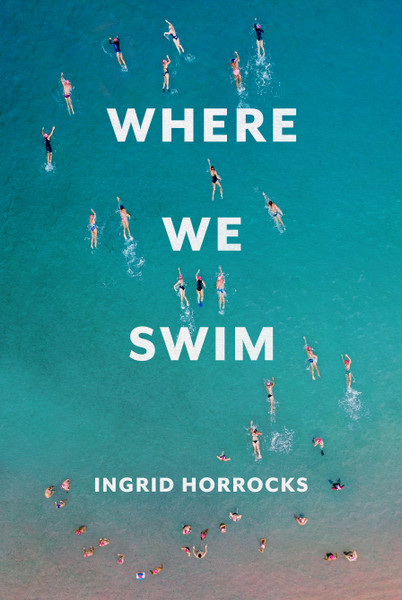Launching Where We Swim by Ingrid Horrocks
16th Mar 2021
Launch speech by Laura Jean McKay
I want to tell you about an island off the coast of a very different place from here: where I was living in southern Cambodia. It was a weekend, the weather was fine enough, I climbed aboard the longboat that would take me the short 20 minute ride across the bay to the mainland. I waved goodbye to my friend who was staying on. We both saw the rain coming. I did not see, until we pulled out and away from the island hills, how big the storm clouds were. I did not see, until the waves were towering over the boat and crashing over the hull, how young the driver of the boat was. I did not realise, until I looked back at him for reassurance and saw a boy barely in his teens yelling desperately into a mobile phone and struggling to hold the tiller, how extremely scared I was. From then I saw: water, the loose planks I thought I could use to save myself and the boy, water, sheets of rain where there should be land, water, the murky depths of the sea, water, water, water. Finally a pier. Two figures standing on it. The boy’s parents pulled him out of the boat and both hugged and shook him, yelling all the while. Eventually the boy gestured at me. I couldn’t speak much Khmer and what I could was taken by the storm still raging around us, but I understood that gesture: tourists. Lives were risked for us every day.
I bring up this memory because to know water, to remember it, to be in it, to long for it, to feel the fear and the worry for it, to be responsible and irresponsible with it, is what consumes this striking new collection by Ingrid Horrocks called Where We Swim published by VUP.
In the opening anecdote I described water as, well, water. How many ways can you describe water? Two hundred and twenty two perfect pages of ways is how. In Where We Swim, Ingrid allows us to travel on waves that are ‘huge gentle things, rising in slopes before falling sumptuously back’, rain ‘slicks glasses’, the Amazon river is ‘as wide and terrifying as the ocean, except with currents and submerged sticks, and piranha’, in England, water is ‘a medicinal flush. Dunking the body in the natural world.’, Back ‘In Aotearoa,’ Ingrid writes, ‘swimming is what people do.’
Perhaps it is a cultural coercing that brings Ingrid to record in her diary one Friday 27 July: ‘Shouldn’t I swim? It looks so cold. Besides, actually swimming feels like taking this whole water business a bit too literally.’ Ingrid is writing literally in this book: about the physical, cultural, emotional and environmental impact of human immersion in water. ‘It’s about’, she writes, ‘being on the edge of the sea, about shipping lines and flight paths and whale migration routes.’ The generosity of this book is that of an author with arms outstretched, as if to embrace, but also to tread water, exposing that vulnerable space of belly and chest to the realities of the climate changed world she faces as a person, as a parent, as a sibling, as a child; to 47 degree Phoenix Arizona heat that grounds planes because the hot air is too thin for them to take off safely; to a ‘New Zealand [that] has the highest rate of car ownership in the OECD, and the fifth highest greenhouse gas emissions per capita’ – mostly from agriculture; to an Australia that honours the colonial flame, ignoring the tens of thousands of years of Indigenous fire.
Hang on. This collection, as I said to Ingrid slightly accusingly on the phone, it isn’t really about swimming at all! It’s about the writer and who she is as a human in the world. The metaphorical concept of swimming through your own life reminds me of John Cheever’s 1964 short story ‘The Swimmer’, in which a man swims home through the neighbourhood pools, watching his life degrade with each dip. Ingrid pushes this idea further, plunging into the personal and breaking the surface barrier between the human and the nonhuman.
Reading this collection is to be at once immersed and held by this accomplished essayist. For those who know Ingrid’s work, you will recognise the power of an author who is at the height of command over her craft. For those new to Ingrid’s work, you will be astonished at how much is revealed in the smallest of moment, as Ingrid picks up familiar objects, tropes and relationships and turns them over to reveal the teeming, waterlogged underside, where whole other realities are revealed.
And so, let us be in this place where, as Charlotte Smith – the focus of Ingrid’s chapter ‘Sussex’ – describes:
Huge vapours brood above the clifted shore,
Night o'er the ocean settles, dark and mute,
Save where is heard the repercussive roar
I would love to hear your oceanic roar now, as we put our hands and glasses together to celebrate and launch Where we Swim.

